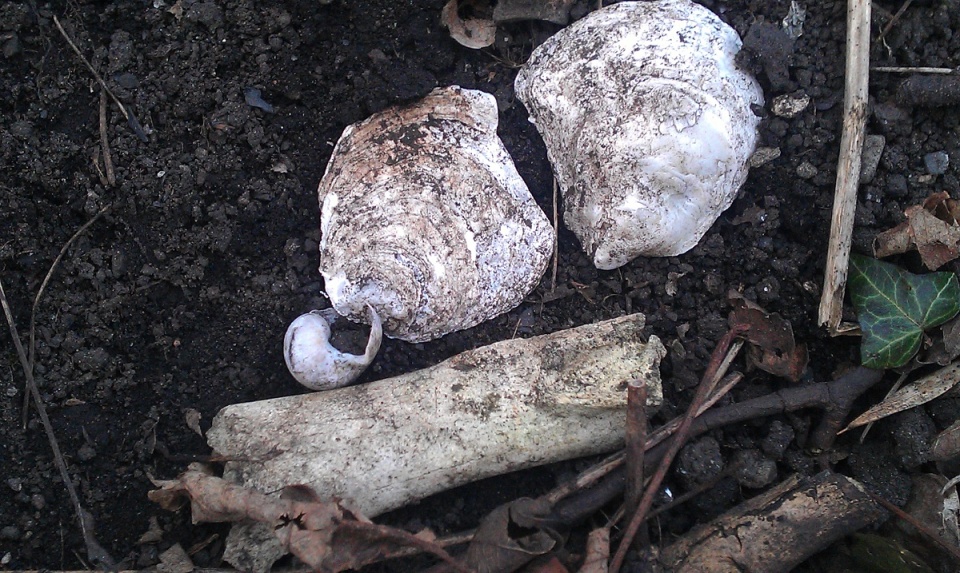Stirling Castle's oyster midden
I walked home tonight along the base of the Stirling Castle rock, a high-level path cut across the incredibly steep wooded slope that surrounds the castle on the North, West and South sides. I was amazed to find these two oyster shells and a common periwinkle shell, along with a piece of animal bone, maybe cow or sheep - it looks like a rib.
All four items were very degraded and could be centuries old. I believe that they have probably rolled or slid down the slope from an old midden, where food waste and other rubbish would have been dumped over the castle wall during medieval times. There are records of shellfish, particularly oysters, being eaten in the castle when it was a Royal residence during the Middle Ages. The native oyster was once found in dense extensive beds across the Forth Estuary, some way downstream from Stirling.
An intensive fishery eventually led to the collapse of the stocks and their apparent extinction by the early 20th century. A couple of years ago, however, a relict population of the original oysters was found, rather wonderfully, surviving in shallow inshore water in the estuary, near Edinburgh, a century after they were believed to have gone for good. It was great, today, to find this 'archaeological' evidence of past exploitation of this once great resource. The oysters from these shells could even have been eaten by King James VI of Scotland or Mary, Queen of Scots!
- 0
- 0
- Htc Desire HD A9191
- 5mm
- 181


Comments
Sign in or get an account to comment.


